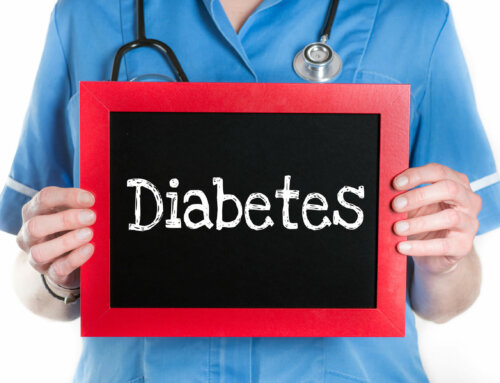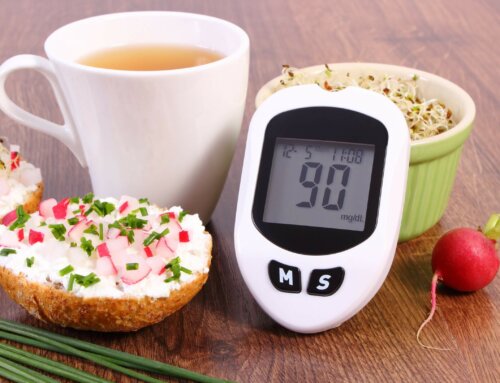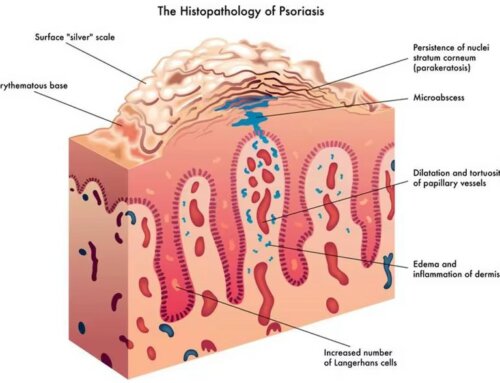Food as medicine is not a new idea. Hippocrates, the ancient Greek, made the connection by saying, “Let food be thy medicine and medicine be thy food.” Think of culinary medicine (CM) as the well -known proverb: “Give a man a fish and you feed him for a day, teach a man to fish and you feed him for a lifetime.”
A poor diet is the number one risk factor for early death in the US and globally. Sub-optimal dietary choices and the current food environment can lead to many forms of chronic diseases including diabetes and cardiac disease. As recently as 2019, 10% of Americans or less ate enough vegetables per day and only 12% of Americans ate enough fruit per day. The recommended guidelines from the CDC are currently “adults should consume 1.5-2 cups of fruits and 2-3 cups of vegetables daily.”
People with diabetes often “have fears about eating fresh fruits” which is unfounded. Portion control when eating fruit is imperative. Low-income Americans and males eat the lowest amount of fresh/frozen fruits and vegetables. Diabetes affects about 10% of the adult population and nearly ½ the US population has a chronic disease.
Technology updates in agriculture after WW-2 lead to food that tasted good, which was also quick and easy to prepare. They were called frozen TV dinners. These quick and fully prepared dinners were high in sodium, high in saturated fat and additives, had added sugars and were too high in Omega 6 fatty acids.
Omega 3 are fatty acids that are essential fats that benefit your brain, heart and metabolism. Omega 6 fatty acids provide energy to your body but are over abundant in our American diets. The human body can’t produce Omega 3s and they must be consumed.
The types of Omega-3s include: EPA, DHA and ALA. Omega 3s fight inflammation and decrease the amount of fat stored in your liver. This is extremely helpful if you have diabetes. Omega 6s found in foods, are highly pro-inflammatory. Omega 6s are contained in corn oil, mayonnaise, eggs, processed, fried and fast foods.
What we need to eat is more fresh or frozen fruits and vegetables, whole grains, proteins, low fat dairy, legumes, nuts and foods high in Omega 3 fatty acids. Omega 3s are found in cold water fish like tuna, salmon and sardines, as well as flax seeds, chia seeds and walnuts.
Decades of research have explored nutrition in prevention and improvement of chronic conditions, particularly in diabetes care. Whole foods and plant foods always provides more nutrition than high saturated fat, high protein foods when dealing with blood sugars and body weight.
Whole fresh foods even help lower insulin resistance which is a precursor to type 2 diabetes. Whole plant foods offer immune benefits and disease fighting properties. They contain all the amino acids and an abundance of fiber. Overall, poor-quality diets are the leading cause of morbidity and mortality in the US.
According to a recent report published by The Milken Institute in 2023, “The cost related to the chronic disease of obesity is more than 1.4 trillion annually.” The projection for 2030, is 39 US states will have obesity rates over 50%. There are over 60 co-morbidities associated with obesity.
In 2022, the economic burden of diabetes was estimated at 412 billion dollars. When you think about managing your diabetes, usually medication and exercise are the first items mentioned. Believe it or not, “Food can be an effective tool for diabetes treatment and management.”
Certainly, in recent years, food intake and cooking have been part of a growing personal health and wellness craze. Major advances have taken place in the role of nutrition in the prevention and management of chronic diseases, including diabetes.
Many times, after a diagnosis of type 2 diabetes, the physician tells you to “start eating healthy.” That is vague advice. Physicians take minimal nutrition courses in medical school and what they do study mainly focuses on learning about vitamin and mineral deficiencies. Therefore, they lack confidence in counseling patients about lifestyle and nutritional modifications.
Current statistics show “only 38% of primary care physicians across the country actually discuss nutrition” with their patients. There is still no advice for a “One size fits all” recommended dietary approach diabetes diet. There are socio-cultural specifics and pleasurable aspects of preparing, cooking, and eating food, that is not being taught.
What is Culinary Medicine?
“Culinary medicine is an evidence-based field that blends the art of food and cooking with the science of medicine to create a healthy, dietary plan. It is a combination of nutrition, science and culinary arts.” Instead of focusing on sick care or after the fact care, culinary medicine focuses on preventative care.
Culinary medicine is trying to put an end to chronic diseases as we know them. Still in the stages of infancy, initial studies show improvement and advancement in the field of culinary medicine. The field is rapidly growing. Hands-on nutritional training seems to make positive changes for the patient and the entire family.
Now, more than ever, it is recognized as “eating high quality meals to prevent and even treat diseases.” Studies have shown 3 times the adherence rate of following a healthy diet plan when there is hands-on experiences with a kitchen based nutrition course.
Finding affordable, nutritious and anti-inflammatory foods help people with chronic diseases feel better and physically improve. The concept is that different chronic diseases warrant different meals, foods and beverages which will eventually lead to greater health outcomes.
It helps the patient be more empowered to take care of themselves. It provides more knowledge and understanding of food quality to the patient’s family. It teaches them how food works in their body, how it can enhance the body’s function and includes the patients social and cultural aspects, specific to them. Culinary medicine enhances the pleasure of preparing, cooking and finally eating the food.
Culinary Medicine teaches:
- Patients to recognize the profound impact that food choices have on their health.
- How, where, when and what to shop for within their own monetary budget and resources.
- How to actually enjoy and prepare tasteful and healthful meals.
- How to safely navigate the food in their environment and feel confident.
What is an example of culinary medicine in your medical clinic setting:
An example would be a health care professional “writing out a food prescription plan and using it as a personal tool.” A personal prescription is set up below.
F – Frequency of a food to be eaten.
O – Objective or goal of that specific food.
O – Options = different methods to prepare, grow, ship and serve food.
D – Duration = how many times a day, a week, or a month those foods should be prepared and eaten.
This gives the patient a solid and written plan to work with
What happens when patients participate in a food prescription program?
- They cook more from scratch with fresh ingredients.
- They eat more fresh and flash-frozen fruits and vegetables.
- More complete meals are served and eaten. Sides and salads are included.
- They skip meals less often. (A huge benefit when you have diabetes)
- They develop an “overall healthier relationship with food.” Less food obsession. Less eating disorders.
- They partake in cooking classes.
- Food choices become more varied.
- Some food prescription programs come with a “prescription food pantry.” These pantries are stocked with healthier versions of foods to choose from when finances are a concern.
FAME (Food As Medicine)
Food As Medicine or FAME is a “nutrition education initiative at community pantry sites” that offer culinary medicine classes. Food as Medicine is another term used for the idea that nutrition plays a major role in people’s overall health. Food as Medicine has become a part of a nationwide focus.
At the beginning, FAME was funded only by non-profits which made funding sporadic and left patients hanging. They did well for a while, but when there were no resources, their eating went back to more fast and processed foods. Research shows “diet plays a role in everything.”
Using food as medicine encourages patients to be creative with new foods, try healthful foods, take responsibility for meal preparation and encourage families to join together and sit down to eat a meal. Multiple federal agencies are working on “food is medicine” projects.
Recently the White House has offered support for “healthy food” used as a medical intervention for chronic/diet related illnesses. Major organizations and companies have pledged millions of dollars in research on this topic. Food focused start-ups are popping up everywhere. Many states already offer free or low-cost healthy food programs under Medicaid.
Understanding and the need for these programs grew even larger after COVID. Eventually the goal is to have physicians always write a prescription for “Healthy Foods RX” and for it to be funded by Medicare and private insurance similar to a health care provider writing a medication prescription and filling it at your pharmacy.
Medical Schools
Culinary medicine is now being introduced and taught at different medical schools so medical students can improve their confidence levels and abilities to counsel patients “through diet to help their chronic diseases.” It is usually reserved for 4th year medical students, but some schools introduce these culinary courses even earlier.
Culinary medicine courses increase “physician counseling confidence.” UT-Southwestern is the first medical center with a licensed “Health meets Food” medical center and training programs. It teaches the medical professionals about wellness and healthful eating. These courses are electives at this point and are not mandatory. Hopefully in the future, these courses will become mandatory and part of the actual medical school curriculum program.
Not only has “hands-on culinary medicine education” been a promising tool for diabetes health promotion, but also for cardiovascular health. Remember, heart disease is still the leading cause of death of patients with diabetes.
Why is there recent new found interest in Culinary Medicine?
- We are surrounded by media offering conflicting dietary advice about weight loss and weight management. Social media offers a lot of unfounded and unscientific information especially about diet.
- People are much more interested in managing their illness with food besides taking medication and participating in medical treatments.
- Integrative medicine has become more popular while “looking at the whole patient” not just the “ill patient.” Integrative medicine is an approach to healthcare that includes practices not traditionally part of conventional Western style medicine. It includes knowledge of herbs and supplements, meditation practices, wellness coaching, acupuncture and nutritional education with hands-on experiences.
- More interest and budget consciousness about food due to higher prices just for grocery basics.
- More overall knowledge “out there” about highly processed, convenience, fast food and refined foods. People care more about what they are eating.
- Rising cost of health care with roughly 30% of older, lower income adults having to choose between food or purchasing medications.
- Interest in local agriculture products.
- Interest in home gardening.
- More enthusiasm about additive-free foods.
- More interest in food allergens and the effect on their body.
- Better understanding of plant-based eating and health benefits.
- Learn to make food taste yummy not just be healthful and taste boring. Not just a bowl of raw greens or “rabbit food” but sautéed seasoned greens with olive oil and a spicy herb sauce.
- Learn actual, useful food tips. Examples would be: overcooked pasta has a higher impact on blood sugar levels than pasta cooked “al dente.” An overly ripe banana produces a higher blood sugar response compared to a green banana. An apple eaten whole has a smaller impact on your blood sugar than apple sauce. Brown or wild rice is better for your diabetes than white rice.
- Culinary medicine has already demonstrated a significant pre to post-test reduction in diabetes patients- A1C, daily blood sugars, blood pressure and cholesterol levels.
- Weight has dropped and medication amounts have been reduced as a result of culinary medicine.
What are some main concepts taught in Culinary Medicine programs?
- Sodium reduction taught in home cooking. No salt added to foods after cooking.
- Increased use of spices, citrus and herbs to flavor foods without added calories or sodium.
- Planting and growing your own herb garden.
- Increased desire to eat more plants and recognize the health benefits.
- Learn about fermented foods for microbiome/gut health. (Yogurt, sauerkraut and Kefir).
- Understand complementary flavors and varied cooking techniques. Using less fat/butter and oil.
- Food literacy. Understanding protein, fat and carbohydrate basics. How each food group enhances and affects your body. Why your body requires each nutrient.
- Learn about food that is “nutritious and delicious” and can be accessed by everyone and anyone.
- Understand the benefits of added fiber for general health and benefit in diabetes.
- Learn about processed, refined and empty calorie foods.
- Hands-on training in simple culinary skills such as basic knife techniques, making simple sauces.
- Understanding how to use kitchen products like a crock-pot, a food processor, a blender, a bread-maker, a mixer, a rice cooker and an Insta-pot.
- Understand what gluten-free means. Learn what dairy-free means.
- Promote community involvement that celebrates nourishing food in a group setting.
- Gives dietary strategies for food allergies and intolerances.
- Learn about how food choices affect your metabolism.
- Time saving cooking techniques.
- Disease specific basic nutrition modules.
- Offers interesting online sites for diabetes friendly recipes, such as Old Ways, a Mediterranean inspired meal site with free healthful recipes. Other sites which may be recommended are: My Bizzy Kitchen, Eating Well, Colorful Eats, Diabetic Foodie, Diabetic Gourmet Magazine and Diabetes Rejoice.
- Learn ways to overcome “food deserts.”
Interesting tidbits about Culinary Medicine
- 2003- 1st cooking and nutrition elective taught at SUNY – upstate university NY medical school.
- 2007- 1st clinical nutrition post graduate course offered at Harvard.
- 2013- 1st culinary medicine center opens at Tulane Medical School in New Orleans.
- 2013- Senior elective (4th year) in culinary medicine in medical schools offered at Des Moines University and Santa Barbara hospital.
- With curriculum progression in new center, we learn how clinical people such as physicians and professors create their own health habits and self-care.
- More up to date information offered on food and well-being.
- Information and actual demonstration, more than just talk.
What is a Produce Prescription?
“A medical treatment or protective service” for patients who are eligible due to a diet-related health condition or food insecurity. You are referred by a health care provider or health insurance plan. Produce prescription programs are designed to improve overall health outcomes.
Pilot programs in the 1980s linked low income shoppers with local farmer’s and farmer markets. In August 2023, the medical journal in Circulation reported there were 9 “produce prescription programs” evaluated. “Markers for hypertension, diabetes and obesity improved with just 1 cup of daily produce.”
Look up Planet Harvest, a company “on a mission to revolutionize the way people enjoy fresh produce, to make it accessible and convenient for everyone.” They want to optimize the supply chain with pricing, product, quality, and distribution.
Examples of eating for specific health conditions using Culinary Medicine
- Autoimmune diseases such as rheumatoid arthritis – choose an anti-inflammatory eating pattern.
- Epilepsy – choose a ketogenic pattern diet that contains no or minimal carbohydrates.
- Heart disease/Diabetes – Mediterranean eating plan, counted carb plan. Plant based plan.
- Metabolic syndrome – incorporate tree nuts.
- High cholesterol – Add legumes, beans and peas to your plan.
Finally, simple Culinary Medicine advice with diabetes:
- Always eat breakfast.
- Refrain from eating 3-4 hours before bed except for a small protein/high fiber snack if you need it.
- Keep hydrated. Drink only calorie-free beverages.
- Sit when you eat. Focus on your food, nothing else.
- Wait 10 minutes and brush your teeth after each meal. Get the taste of food out of your mouth. Even just rinse with water. After cleaning your teeth, try not eating until the next meal.
- Take every opportunity for cooking demonstration and meal planning classes/seminars.
- Utilize online resources.
- Check out community-based food programs and classes.
Culinary medicine is currently being used to assist patients in understanding more about nutrition and how it relates to them in sickness and in health. Take part in this interesting approach to help control your chronic illness, including diabetes.
References:
- https://www.ncbi.nlm.nih.gov/pmc/articles/PMC4739343/
- https://nortonchildrens.com/news/diabetes-treatment-food/
- https://pubmed.ncbi.nlm.nih.gov/34960044/
- https://pubmed.ncbi.nlm.nih.gov/33200324/
- https://www.uth.edu/news/story/culinary-medicine-education-program-shows-positive-outcomes-for-lowincome-patients-with-diabetes
- https://pubmed.ncbi.nlm.nih.gov/3254207/
- https://news.mit.edu/2023/food-medicine-diabetes-study-1227
- https://pubmed.ncbi.nlm.nih.gov/25268279/
- https://pubmed.ncbi.nlm.nih.gov/33541352/
- https://www.phi.org/press/new-study-food-as-medicine-program-showed-patients-better-managing-diabetes-eating-healthier/
- https://www.producebusinessuk.com/how-retailers-agencies-in-the-u-s-are-trying-to-build-momentum-for-produce-based-prescriptions/
- https://phoenixmed.arizona.edu/newsroom/news/culinary-medicine-crafts-healthy-alternatives-diabetes-patients
- https://utswmed.org/conditions-treatments/culinary-medicine/
- https://www.healio.com/news/endocrinology/20240320/qa-people-with-diabetes-can-benefit-from-whole-foods-plantbased-eating-plan
- https://www.medcentral.com/endocrinology/diabetes/why-i-prescribe-food-as-medicine-in-diabetes-management
- https://www.planet-harvest.com
- https://culinarymedicine.uams.edu/about-us/what-is-culinary-medicine/
- https://ods.od.nih.gov/factsheets/Omega3FattyAcids-Consumer/
- https://www.medicalnewstoday.com
- https://www.mayoclinic.org/departments-centers/integrative-medicine-health/sections/overview/ovc-20464567
- https://www.healthline.com/health/diabetes/diabetic-recipes-best-places-online







Leave A Comment